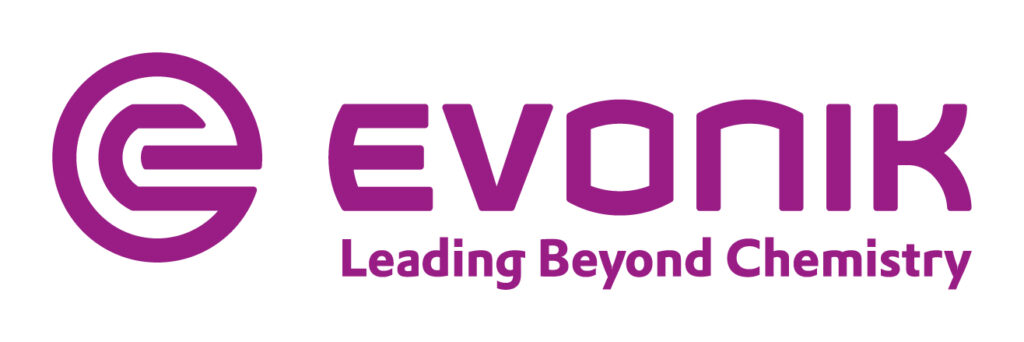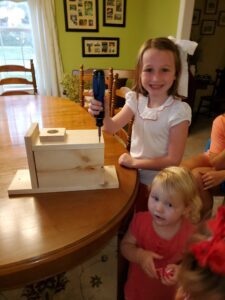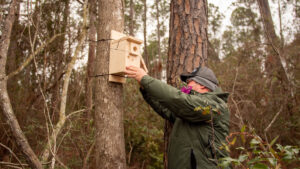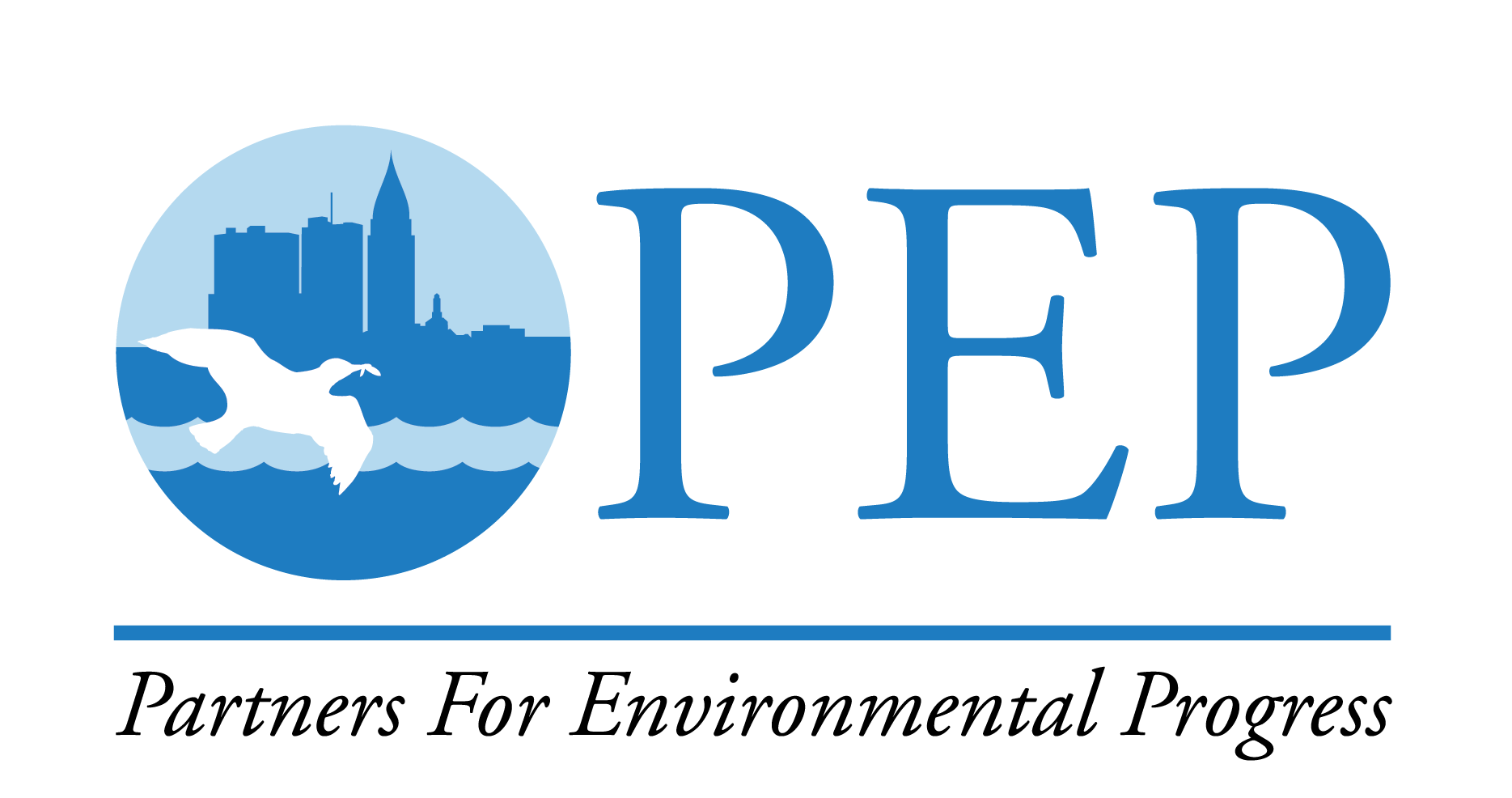Evonik – Flora and Fauna Habitat Enhancements

Last year was a big year for Evonik regarding environmental stewardship as they worked on two major habitat enhancement projects: one for wildlife and one for habitat.
Evonik has built osprey nest platforms, bluebird houses, purple martin houses, and duck boxes in the past. In 2020 they surveyed these houses and realized that many needed to be replaced. Also, during this time, many of their employees were missing their customary volunteer opportunities and employee team-building. Evonik recognized an opportunity to enhance their existing wildlife habitats while also addressing the needs of their employees to work together and give back. 
Brian and Chris built 70 bluebird houses and 15 duck house kits and asked employees to take them home to build and bring back completed. “My grandson and I had such a great time building our birdhouse together,” said John Sims, Evonik employee. “I hope we can continue to get families involved in projects like this.” After completing the Evonik birdhouse project, John and his family built several more for their yard. The family has enjoyed watching the birds from their back porch.
An employee picked up each birdhouse kit, assembled with their family, and then Evonik installed all of them in time for nesting season in the spring of this year. Evonik has continued to monitor the houses to see if they are being used by wildlife. Approximately 75% have been used this year and they hope all of the remaining birdhouses will be utilized by next year’s nesting season.
 For the second project in 2020, the Evonik team targeted nearly 12 acres of “low quality” Wet Pine Flats land for restoration. Evonik has had an active plant wildlife project since 2014. In the last seven years, they have removed trees and shrubs, performed controlled burns, planted thousands of native plant species, reduced exotic species and much more on the land.
For the second project in 2020, the Evonik team targeted nearly 12 acres of “low quality” Wet Pine Flats land for restoration. Evonik has had an active plant wildlife project since 2014. In the last seven years, they have removed trees and shrubs, performed controlled burns, planted thousands of native plant species, reduced exotic species and much more on the land.
Evonik has contracted with Barry A Vittor and Associates to evaluate the strength and success of the project. They use a measuring tool called the Functional Capacity Index (FCI) which is determined through sampling and is derived from the following indicators:
- Herbaceous species diversity
- Native bunchgrass cover
- Native sedge cover
- Physiognomic structure of pond cypress
- Pie density
- Subcanopy density
- Cover of non-native species
Since 2013, the FCI had increased from 0.31 to a maximum value of 0.91 in 2018. In 2020 the FCI was 0.82 due to inclement weather that caused them to cancel the planned controlled burn. But, 2020 also saw the return of several native species, including giant plume grass.
While the COVID-19 pandemic hit their team hard with respect to limiting employee activities, volunteer opportunities and community event participation, they chose to make lemonade out of lemons. These projects allowed their team members and their families to work alongside each other to better our coastal environment while remaining healthy and safe.
“To see our company’s continued focus on the environment after all these years makes me proud to have been a part of the Evonik family for 35 years,” said Chris Bolling, retired Evonik employee. “Seeing the younger workforce being so involved shows that Evonik will maintain its focus on the environment for years to come.
Recent Posts
Thompson Engineering Announces Spanish Fort Office Addition
Thompson Engineering has opened a branch office in Spanish Fort, Ala.
Applications Open for the MAWSS 2024 Citizens Water Academy
Discover the inner workings of the Mobile Area Water and
PEP Talk – Community Quarterly Newsletter
We’re excited to share the first PEP Talk – our
Challenges and Triumphs: Electrifying the Future of Tugboat Design
During PEP’s March Member Breakfast, our speakers discussed the current
Outokumpu Makes Corporate Knight’s List of Clean200
Another PEP member is in the news for their work
